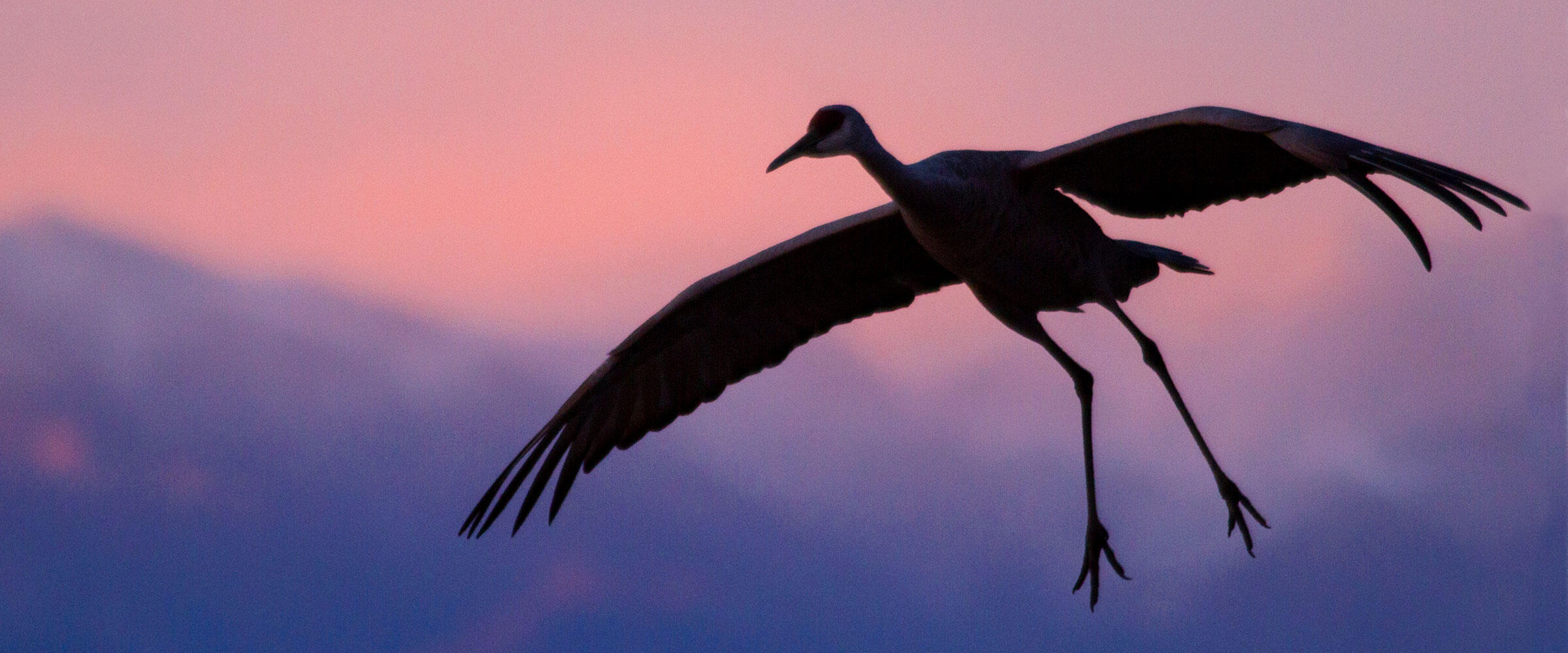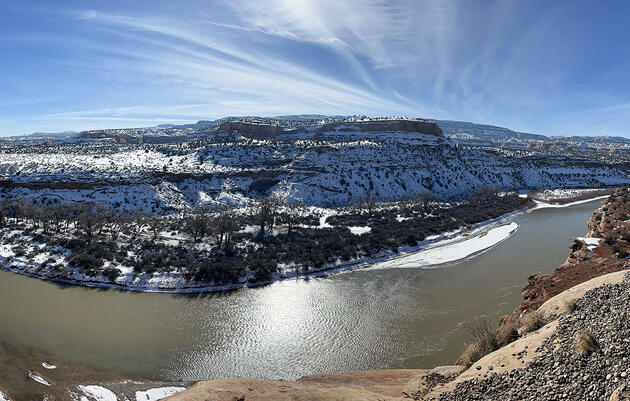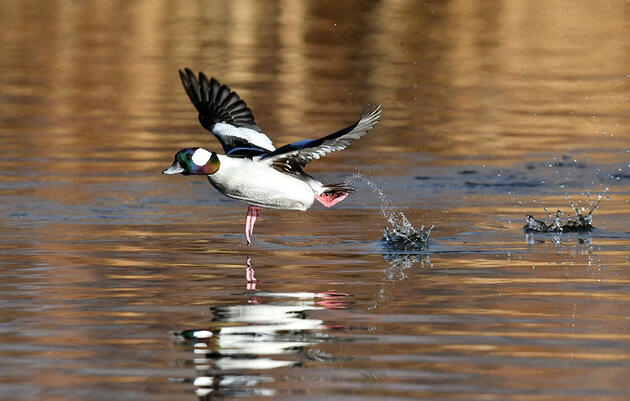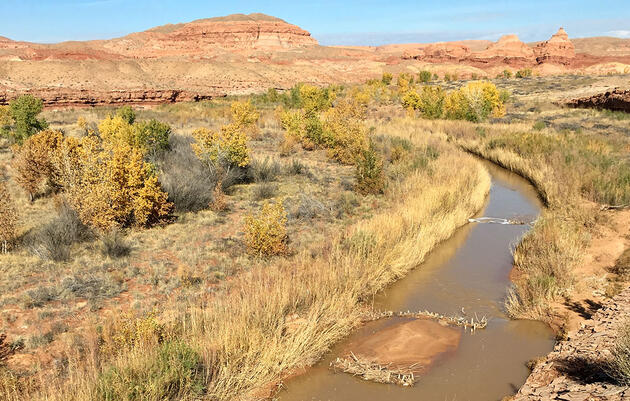Colorado faces significant water resource challenges due to the state’s natural aridity, vulnerability to drought, rapid population growth, and a changing climate. Audubon works to align bird habitat protection and restoration with more reliable water supplies for all communities while addressing historic injustices. With this foundation, we and our partners are opposing a water project in the San Luis Valley. Here’s why we’re opposing it and what you need to know about the project.
Located across nearly 8,000 square miles in south-central Colorado, the San Luis Valley contains a suite of ecosystems and landscapes found nowhere else. With a population of 16,550 people, the San Luis Valley is also home to three national wildlife refuges, Great Sand Dunes National Park, and two Important Bird Areas. It has a rural economy that is largely driven by agriculture. As stated in the valley’s 2021 Comprehensive Economic Development Strategy, “as goes agriculture, so goes the region.” Agriculture not only provides one-third of the valley’s income, but also sustains wetlands and habitats for birds and wildlife.
The San Luis Valley economy, culture, environments, and critical and distinct bird habitats are threatened by a recent proposal to export an unsustainable amount of water to the Front Range. Renewable Water Resources’ (RWR) proposal requires the dry-up of 20,000 irrigated acres in the valley to pump 7.17 billion gallons of water annually to Douglas County, located in the southern Denver metro region.
The RWR proposal would significantly impact critical habitat for migrating and breeding waterfowl and shorebirds and migration corridor along the Rio Grande for songbirds. Agricultural "buy and dry" would negatively impact the farmers, communities, and bird species such as Sandhill Cranes, an icon of the San Luis Valley. The annual crane festival brings $3.5 million into San Luis Valley communities every March. More than 20,000 Greater Sandhill Cranes and a few thousand Lesser Sandhill Cranes spend part of their spring and fall each year in this Valley. Nearly the entire Rocky Mountain population of Sandhill Cranes bottlenecks in the San Luis Valley during its migration. While in the San Luis Valley, cranes build up energy by consuming unharvested grains in agricultural fields and aquatic invertebrates in wetlands.
Due to the unique location, environments, and interconnectivity between surface and groundwater, more than 300 bird species can be found in the San Luis Valley. For example, the valley contains several heron breeding colonies (exceeding 200 pairs) that include species of White-faced Ibis, Snowy and Cattle egrets, and Black-crowned Night Heron. Two Important Bird Areas (IBAs), the Alamosa and Monte Vista National Wildlife Refuge Complex and the Rio Grande and Home Lake State Wildlife Areas, are State IBAs found in the San Luis Valley.
The proposed RWR project would impact birds and other wildlife habitats on multiple fronts. Receiving fewer than 8 inches of precipitation each year, the San Luis Valley is one of the driest regions in Colorado. In the past two decades, drought, reduced precipitation, and high rates of ground and surface water withdrawals have threatened some of the valley's important wetland and riparian areas. There is no renewable water in the San Luis Valley to export. Its aquifers are over-appropriated and climatic trends point to even less available water.
Removing water from the aquifers, as stated in the RWR proposal, could negatively affect aquatic ecosystems key to the region. For example, the entire well field would be placed near the Baca National Wildlife Refuge, potentially impacting the wetland and aquatic ecosystems supporting migratory birds' breeding and feeding grounds. Pumping could also affect the unique hydrology of Great Sand Dunes National Park, home to over 250 bird species and more than 500,000 annual visitors.
The RWR proposal is out of alignment with the Colorado Water Plan—a framework for state water planning, projects, and policy. The Water Plan condemns the practice of agricultural "buy and dry" due to demonstrated socio-economic and environmental impacts in rural communities. It also includes considerations around new transbasin projects and prioritizes ecological resilience under the conceptual framework. The Water Plan recommends "a path forward that considers the option of developing a new transmountain diversion and addresses the concerns of roundtables, stakeholders, and environmental groups.” The Water Plan also presents seven principles to guide future negotiations between proponents of a new transmountain diversion (if it were to be built) and the communities it would affect. The RWR proposal fails on both accounts to adequately address San Luis Valley’s socio-economic and environmental needs.
In total, the RWR proposal presents what will likely be an expensive ($2 billion), divisive, and risky approach using an unsustainable water source to meet the growing water needs of Douglas County. Audubon recognizes that Douglas County depends on an unsustainable groundwater resource and is growing. We encourage Douglas County to use Coronavirus State and Local Fiscal Recovery Funds to apply broad use of water conservation, efficiency, water recycling, and effective land-use planning before pursuing a precarious project that would have significant impacts on San Luis Valley communities, economies, birds, and other wildlife, and aquatic ecosystems.
RWR proponents say they have a “win-win” project for both the Front Range and San Luis Valley in which the rapidly growing Front Range acquires more water and San Luis Valley benefits economically. While these intentions may come forth as legitimate, they lack long-term sustainable solutions for the community. Monetary advances are not always the solutions we need in a time of climate crisis and water stress. Although a few farmers may benefit from the financial gain, these economic benefits do not favor third-party impacts such as businesses tied to farming (e.g., equipment, suppliers), farm labor, the county tax base—to name a few. The proposed ‘economic gain’ is hard to equate as beneficial when weighed against the economic losses of permanently dried up agricultural lands, cultural loss to the community, and endless adverse impacts on the natural environment.
Win-win solutions that we need are ones that integrate the values of our natural resources, environment, and communities in a forward-thinking fashion. The climate crisis threatens water supply throughout the West. It is in our best interest to invest in solutions that protect water for all—the people of Colorado, our landscapes, and our feathered friends.









